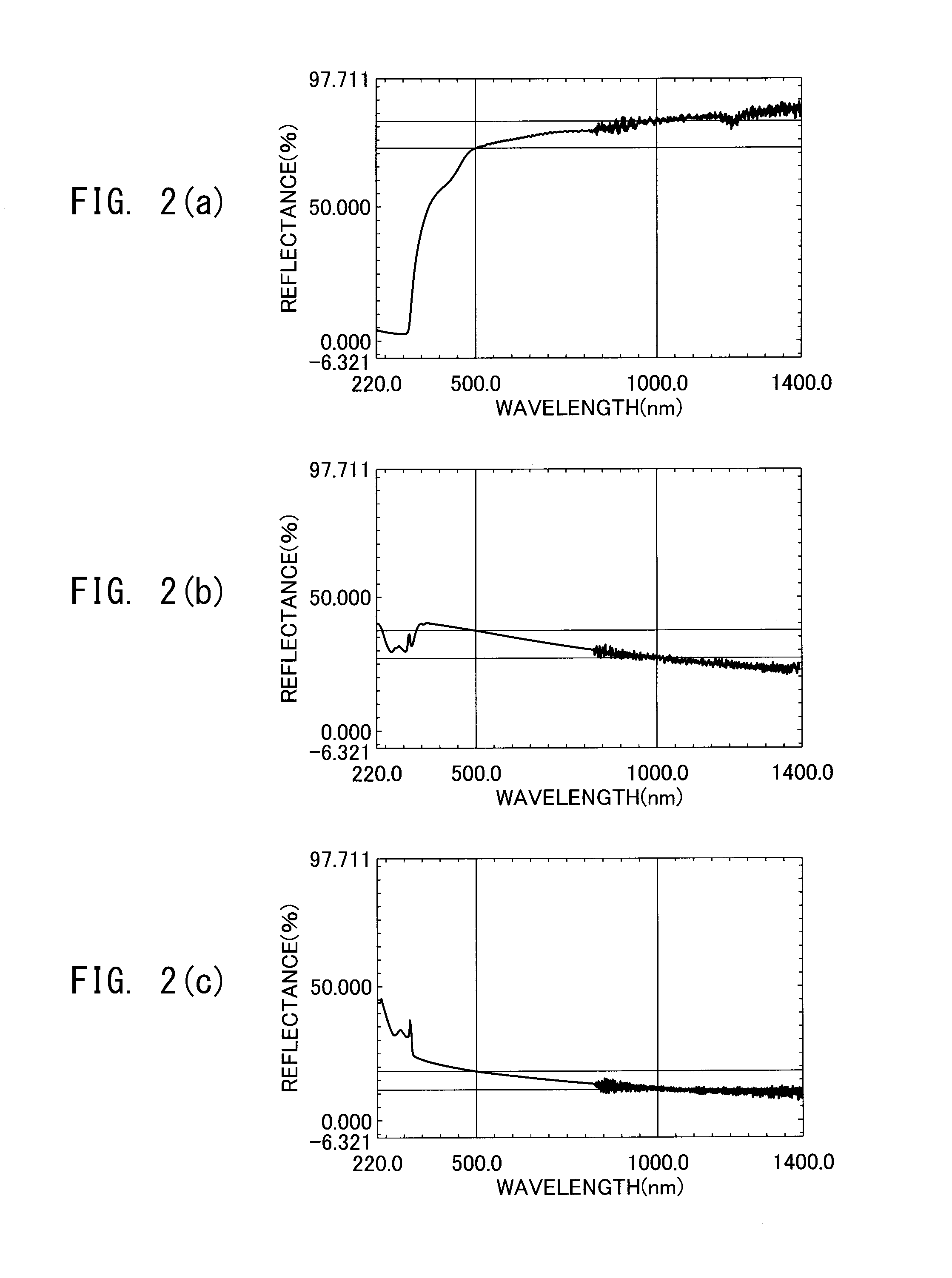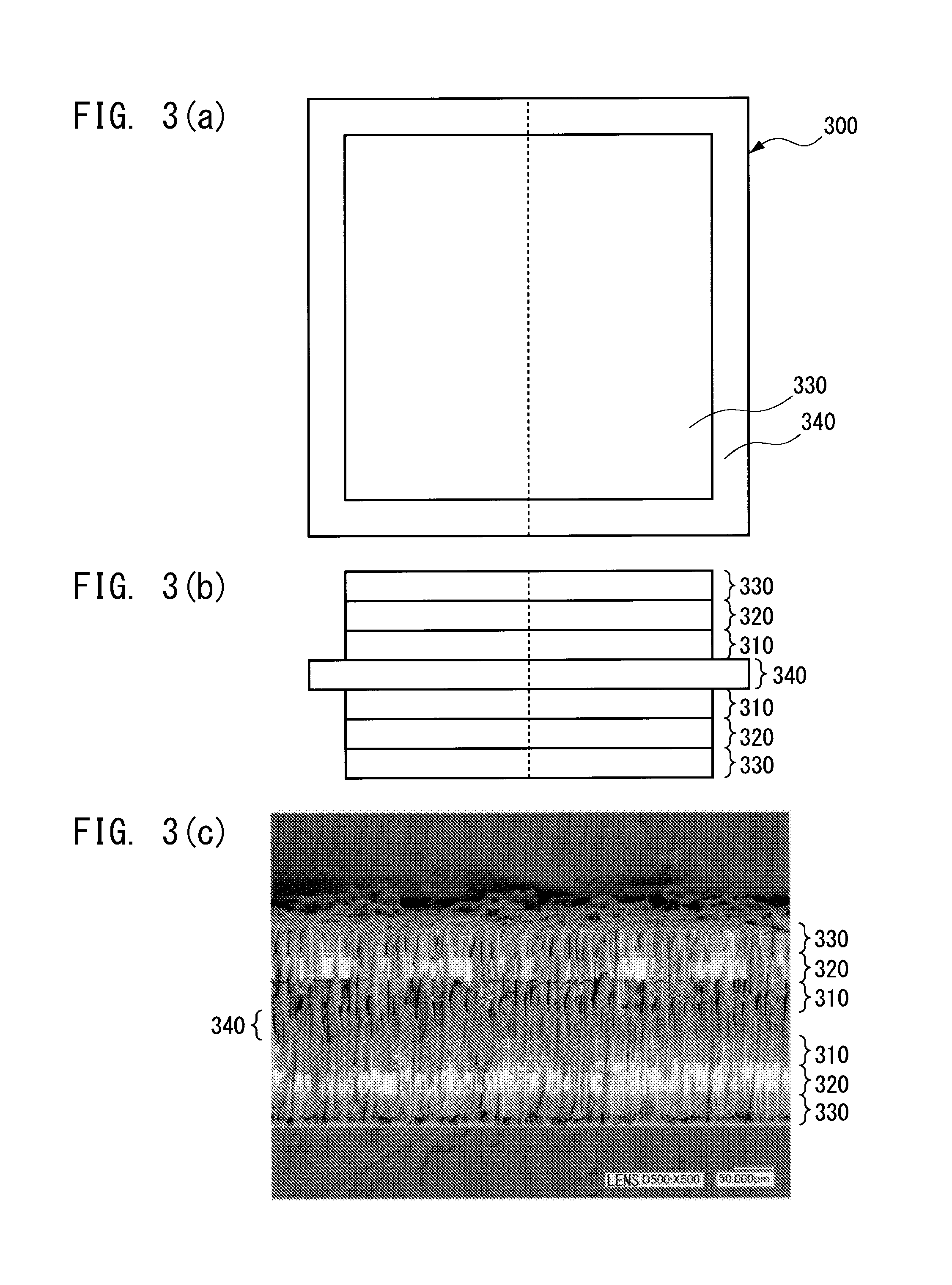Production method of laminate for a battery
- Summary
- Abstract
- Description
- Claims
- Application Information
AI Technical Summary
Benefits of technology
Problems solved by technology
Method used
Image
Examples
example 1
[0179]FIG. 4(a) is a schematic front view of part of the laminate obtained in Example 1, FIG. 4(b) is a side view of the laminate of FIG. 4(a), FIG. 4(c) is a front photograph of the A-B portion of the laminate of FIG. 4(a), and FIG. 4(d) is an SEM image when the laminate of FIG. 4(c) is viewed obliquely.
[0180]In FIGS. 4(a) and 4(b), the removing portion of the negative electrode active material layer 310 is schematically shown. It is seen from FIGS. 4(a) to 4(c) that while part of the negative electrode active material layer310 is removed, part of the solid electrolyte layer 320 remains without being removed.
[0181]It is believed that by virtue of the laser reflectance by the solid electrolyte solution being 80% or more, part of the laser is transmitted through the negative electrode active material layer and / or the direct laser are reflected from the solid electrolyte layer. This results in a high probability that breakage, etc., of part of the solid electrolyte layer is efficientl...
example 2
[0184]FIG. 5(a) is a schematic front view of part of Laminate 1 when Laminate 1 is irradiated with a laser having a wavelength of 1.0 μm from the positive electrode active material layer side and thereby part of the positive electrode active material layer is removed. FIG. 5(b) is a side view of FIG. 5(a) and FIG. 5(c) is a front photograph of the A-B portion of FIG. 5(a).
[0185]In FIGS. 5(a) and 5(b), the removing portion of the positive electrode active material layer 330 is schematically shown. It is seen from FIGS. 5(a) to 5(c) that while part of the positive electrode active material layer 330 is removed, part of the solid electrolyte layer 320 remains without being removed.
[0186]It is believed that this occurs because the laser reflectance by the solid electrolyte solution is 80% or more, particularly, 82% or more, and because the laser reflectance by the solid electrolyte layer is larger by 71% or more than the laser reflectance by the positive electrode active material layer....
PUM
| Property | Measurement | Unit |
|---|---|---|
| Fraction | aaaaa | aaaaa |
| Fraction | aaaaa | aaaaa |
| Reflectance | aaaaa | aaaaa |
Abstract
Description
Claims
Application Information
 Login to View More
Login to View More - R&D
- Intellectual Property
- Life Sciences
- Materials
- Tech Scout
- Unparalleled Data Quality
- Higher Quality Content
- 60% Fewer Hallucinations
Browse by: Latest US Patents, China's latest patents, Technical Efficacy Thesaurus, Application Domain, Technology Topic, Popular Technical Reports.
© 2025 PatSnap. All rights reserved.Legal|Privacy policy|Modern Slavery Act Transparency Statement|Sitemap|About US| Contact US: help@patsnap.com



